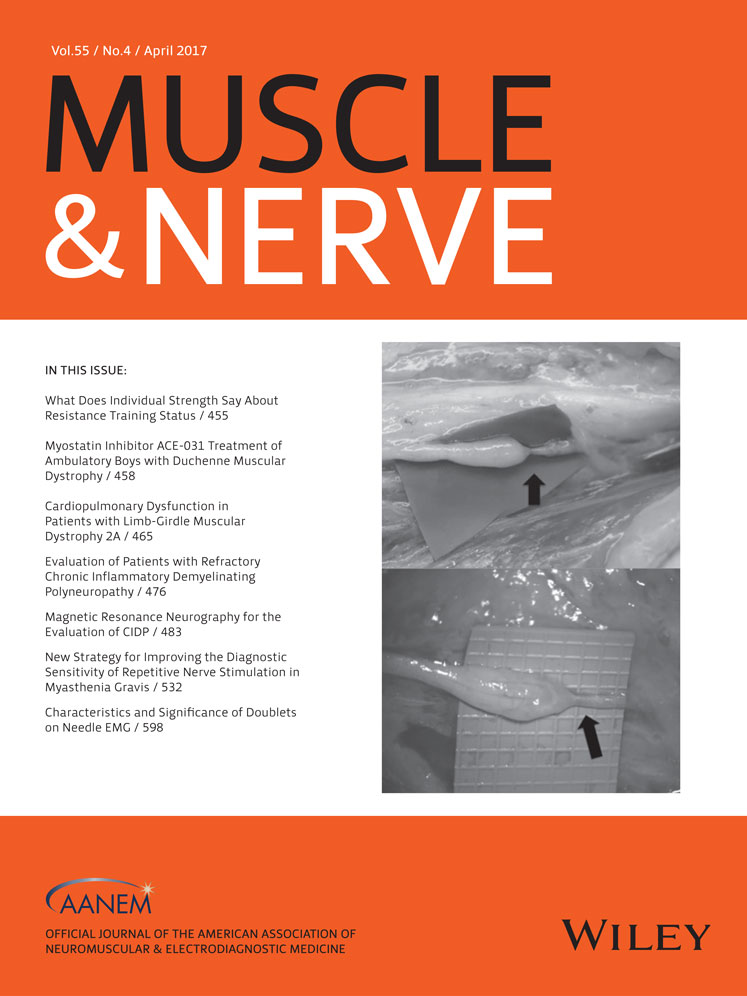Evaluation of patients with refractory chronic inflammatory demyelinating polyneuropathy
Funding: This study was supported in part by the Michael D. Rothman CIDP fund.
Conflicts of Interest: The authors have no disclosures to report.
ABSTRACT
Introduction
Chronic inflammatory demyelinating polyradiculoneuropathy (CIDP) is a common treatable neuropathy, however, nearly 20% of patients remain refractory to standard therapy for unclear reasons.
Methods
We did a retrospective review of 37 patients referred for CIDP refractory to intravenous immunoglobulin (IVIg), plasmapheresis, and/or corticosteroids. Clinical findings, electrophysiological studies, and response to further therapeutic interventions were assessed.
Results
Forty-six percent of patients had CIDP, while 54% had alternate diagnoses. Of patients with confirmed CIDP, 87% showed improvement with escalation of therapy. Distal leg weakness, vibratory sensory loss, and widespread areflexia were significantly more common in patients with confirmed CIDP.
Conclusions
Reasons for therapeutic failure in CIDP are inadequate immunotherapy and alternative diagnoses. Certain clinical and electrophysiological features help to distinguish true CIDP from mimics. Once CIDP is confirmed, optimization of IVIg dosing, addition of corticosteroids, plasmapheresis, or chemotherapy results in consistent improvement. Caution is advised when using response to therapy to diagnose CIDP. Muscle Nerve 55: 476–482, 2017




